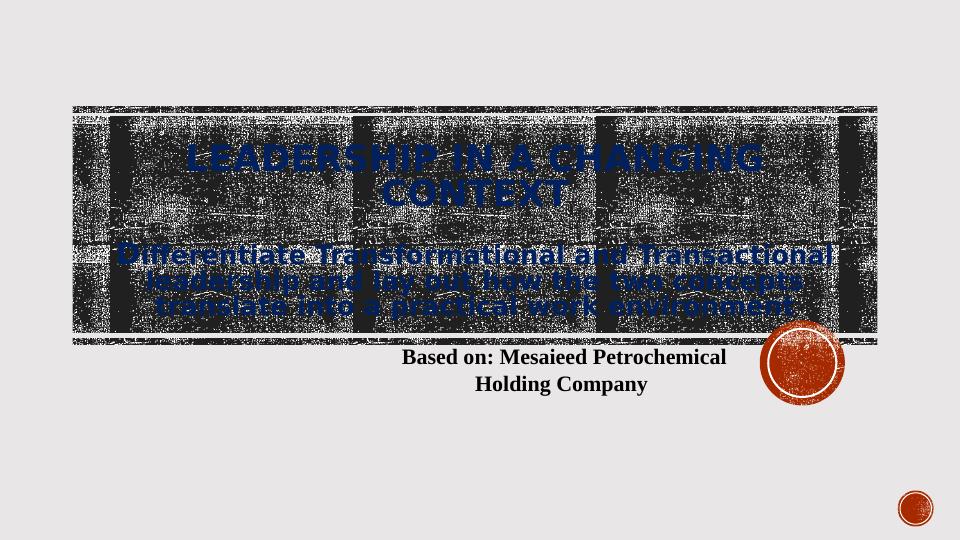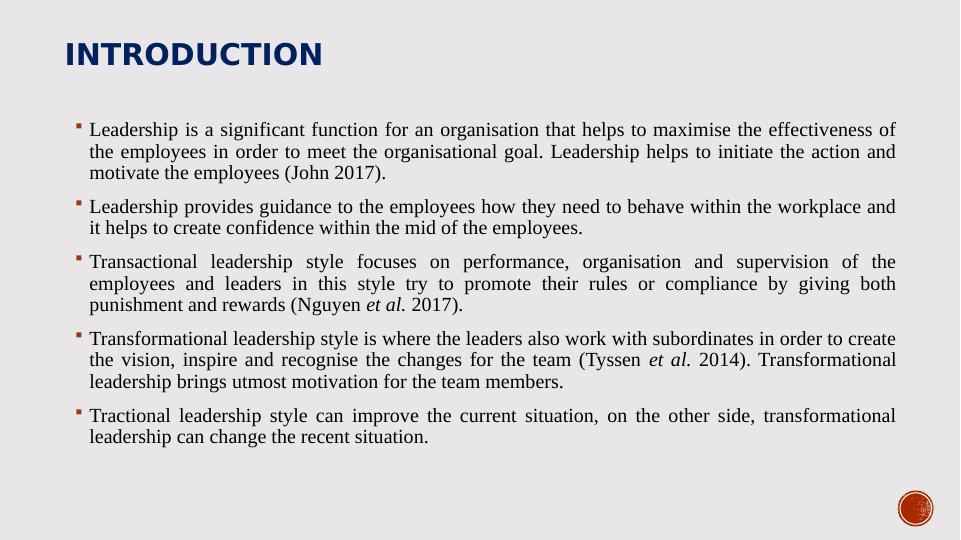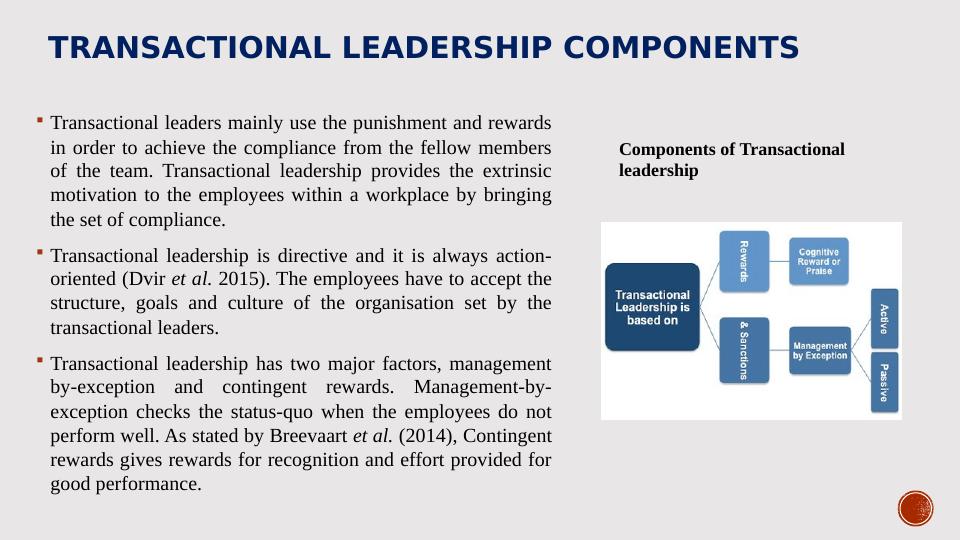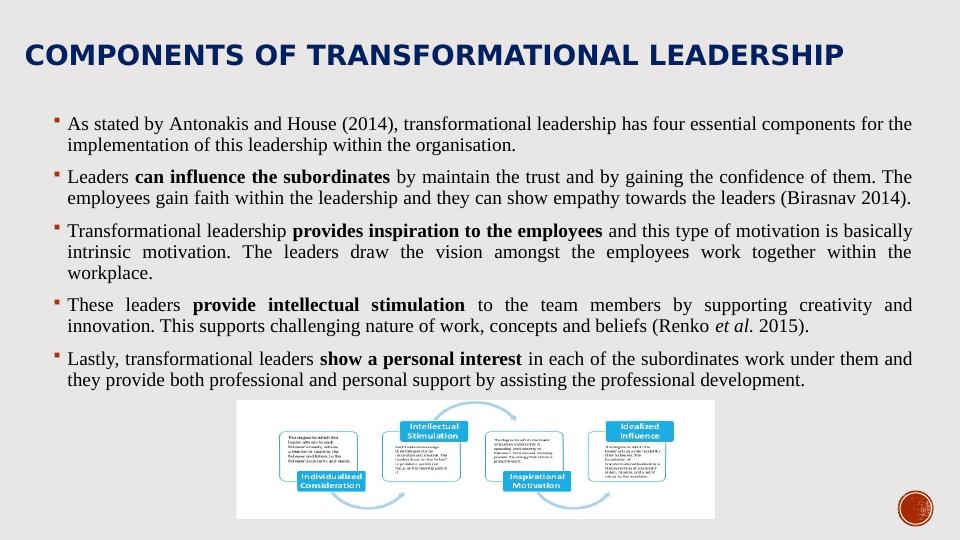Leadership in a Changing context PDF
24 Pages3641 Words25 Views
Added on 2021-04-21
Leadership in a Changing context PDF
Added on 2021-04-21
ShareRelated Documents
LEADERSHIP IN A CHANGING
CONTEXT
Differentiate Transformational and Transactional
leadership and lay out how the two concepts
translate into a practical work environment
Based on: Mesaieed Petrochemical
Holding Company
CONTEXT
Differentiate Transformational and Transactional
leadership and lay out how the two concepts
translate into a practical work environment
Based on: Mesaieed Petrochemical
Holding Company

INTRODUCTION
Leadership is a significant function for an organisation that helps to maximise the effectiveness of
the employees in order to meet the organisational goal. Leadership helps to initiate the action and
motivate the employees (John 2017).
Leadership provides guidance to the employees how they need to behave within the workplace and
it helps to create confidence within the mid of the employees.
Transactional leadership style focuses on performance, organisation and supervision of the
employees and leaders in this style try to promote their rules or compliance by giving both
punishment and rewards (Nguyen et al. 2017).
Transformational leadership style is where the leaders also work with subordinates in order to create
the vision, inspire and recognise the changes for the team (Tyssen et al. 2014). Transformational
leadership brings utmost motivation for the team members.
Tractional leadership style can improve the current situation, on the other side, transformational
leadership can change the recent situation.
Leadership is a significant function for an organisation that helps to maximise the effectiveness of
the employees in order to meet the organisational goal. Leadership helps to initiate the action and
motivate the employees (John 2017).
Leadership provides guidance to the employees how they need to behave within the workplace and
it helps to create confidence within the mid of the employees.
Transactional leadership style focuses on performance, organisation and supervision of the
employees and leaders in this style try to promote their rules or compliance by giving both
punishment and rewards (Nguyen et al. 2017).
Transformational leadership style is where the leaders also work with subordinates in order to create
the vision, inspire and recognise the changes for the team (Tyssen et al. 2014). Transformational
leadership brings utmost motivation for the team members.
Tractional leadership style can improve the current situation, on the other side, transformational
leadership can change the recent situation.

TRANSACTION LEADERSHIP
Transactional leadership focuses mainly focuses on outcomes that
must conform to the existing structure of the companies and it
focuses on measuring the success of the organisational system with
penalties and rewards.
As stated by McCleskey (2014), transactional leaders have
positions and formal authority of responsibility with the
organisation. Transactional leaders always take the responsibility
of maintaining the daily routine by operating the individual
performance as well as the group performance of the team.
As opined by (Delagche et al. 2017), transformational leaders set
some criteria for the employees with some defined requirements.
Transactional leadership is a ‘telling’ leadership style and the
leaders judge the performance of the employees.
In tractional leadership, power comes from organisational position.
Some Transactional leaders in
business are:
Bill Gates
Vince Lombardi
Howard Schultz
Transactional leadership focuses mainly focuses on outcomes that
must conform to the existing structure of the companies and it
focuses on measuring the success of the organisational system with
penalties and rewards.
As stated by McCleskey (2014), transactional leaders have
positions and formal authority of responsibility with the
organisation. Transactional leaders always take the responsibility
of maintaining the daily routine by operating the individual
performance as well as the group performance of the team.
As opined by (Delagche et al. 2017), transformational leaders set
some criteria for the employees with some defined requirements.
Transactional leadership is a ‘telling’ leadership style and the
leaders judge the performance of the employees.
In tractional leadership, power comes from organisational position.
Some Transactional leaders in
business are:
Bill Gates
Vince Lombardi
Howard Schultz

TRANSACTIONAL LEADERSHIP COMPONENTS
Transactional leaders mainly use the punishment and rewards
in order to achieve the compliance from the fellow members
of the team. Transactional leadership provides the extrinsic
motivation to the employees within a workplace by bringing
the set of compliance.
Transactional leadership is directive and it is always action-
oriented (Dvir et al. 2015). The employees have to accept the
structure, goals and culture of the organisation set by the
transactional leaders.
Transactional leadership has two major factors, management
by-exception and contingent rewards. Management-by-
exception checks the status-quo when the employees do not
perform well. As stated by Breevaart et al. (2014), Contingent
rewards gives rewards for recognition and effort provided for
good performance.
Components of Transactional
leadership
Transactional leaders mainly use the punishment and rewards
in order to achieve the compliance from the fellow members
of the team. Transactional leadership provides the extrinsic
motivation to the employees within a workplace by bringing
the set of compliance.
Transactional leadership is directive and it is always action-
oriented (Dvir et al. 2015). The employees have to accept the
structure, goals and culture of the organisation set by the
transactional leaders.
Transactional leadership has two major factors, management
by-exception and contingent rewards. Management-by-
exception checks the status-quo when the employees do not
perform well. As stated by Breevaart et al. (2014), Contingent
rewards gives rewards for recognition and effort provided for
good performance.
Components of Transactional
leadership

TRANSFORMATIONAL LEADERSHIP
As stated by Nguyen et al. (2017), transformational leadership always
encourages people to gain the remarkable results and unexpected
outcomes within the workplace. Within an organisation,
transformational leadership provides the employees autonomy over
a work and this leadership also gives authority to the employees to
take decision.
Transformational leaders are quiet leaders and they set examples for
the fellow subordinates. Transformational leadership style is
associated with the empathy, rapport and inspiration that help the
subordinates to engage in the work process (Delagache et al. 2017).
As opined by Storm et al. (2014), Transformational leadership
provides intrinsic motivation and this leadership style possesses
with confidence, courage and willingness to work hard for greater
good..
Some Transformational
leaders in business are:
Steve Jobs
William Edwards Deming
Peter Drucker
Mark Zuckerberg
As stated by Nguyen et al. (2017), transformational leadership always
encourages people to gain the remarkable results and unexpected
outcomes within the workplace. Within an organisation,
transformational leadership provides the employees autonomy over
a work and this leadership also gives authority to the employees to
take decision.
Transformational leaders are quiet leaders and they set examples for
the fellow subordinates. Transformational leadership style is
associated with the empathy, rapport and inspiration that help the
subordinates to engage in the work process (Delagache et al. 2017).
As opined by Storm et al. (2014), Transformational leadership
provides intrinsic motivation and this leadership style possesses
with confidence, courage and willingness to work hard for greater
good..
Some Transformational
leaders in business are:
Steve Jobs
William Edwards Deming
Peter Drucker
Mark Zuckerberg

COMPONENTS OF TRANSFORMATIONAL LEADERSHIP
As stated by Antonakis and House (2014), transformational leadership has four essential components for the
implementation of this leadership within the organisation.
Leaders can influence the subordinates by maintain the trust and by gaining the confidence of them. The
employees gain faith within the leadership and they can show empathy towards the leaders (Birasnav 2014).
Transformational leadership provides inspiration to the employees and this type of motivation is basically
intrinsic motivation. The leaders draw the vision amongst the employees work together within the
workplace.
These leaders provide intellectual stimulation to the team members by supporting creativity and
innovation. This supports challenging nature of work, concepts and beliefs (Renko et al. 2015).
Lastly, transformational leaders show a personal interest in each of the subordinates work under them and
they provide both professional and personal support by assisting the professional development.
As stated by Antonakis and House (2014), transformational leadership has four essential components for the
implementation of this leadership within the organisation.
Leaders can influence the subordinates by maintain the trust and by gaining the confidence of them. The
employees gain faith within the leadership and they can show empathy towards the leaders (Birasnav 2014).
Transformational leadership provides inspiration to the employees and this type of motivation is basically
intrinsic motivation. The leaders draw the vision amongst the employees work together within the
workplace.
These leaders provide intellectual stimulation to the team members by supporting creativity and
innovation. This supports challenging nature of work, concepts and beliefs (Renko et al. 2015).
Lastly, transformational leaders show a personal interest in each of the subordinates work under them and
they provide both professional and personal support by assisting the professional development.

End of preview
Want to access all the pages? Upload your documents or become a member.
Related Documents
Leadership in Businesslg...
|11
|3371
|422
Advantages of Transactional Leadership Stylelg...
|5
|752
|402
Jack Welch: Leadership Style and Change Managementlg...
|7
|1590
|481
Transactional Leadership: Definition, Examples, and Assumptionslg...
|4
|702
|193
Nigerian Banks Employee Job Performance Evaluationlg...
|22
|6319
|289
Women in Business and Management : Leadership Styleslg...
|4
|742
|16
